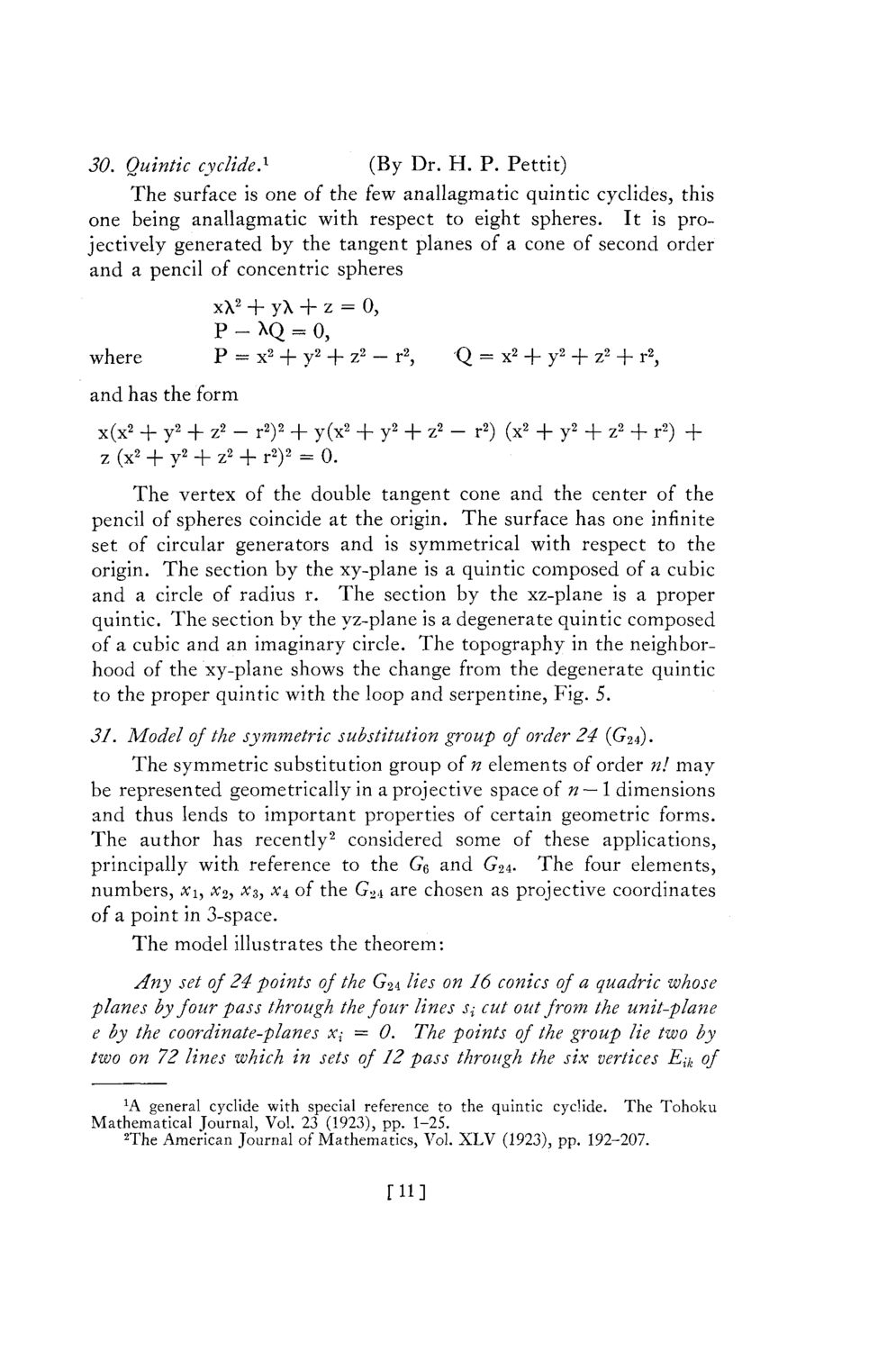| |
| |
Caption: Mathematical Models by Arnold Emch - Series 3 (1925)
This is a reduced-resolution page image for fast online browsing.

EXTRACTED TEXT FROM PAGE:
30. Quintic cyclide.1 (By Dr. H . P. Pettit) T h e surface is one of the few anallagmatic quintic cyclides, this one being anallagmatic with respect to eight spheres. It is projectively generated by the tangent planes of a cone of second order and a pencil of concentric spheres xX2 + yX + z = 0, where p _ XQ = 0, P = x2 + y2 + z2 — r2, Q = x2 + y2 + z2 + r2, and has the form x(x2 + y2 + z2 - r2)2 + y(x2 + y2 + z2 - r2) (x2 + y2 + z2 + r2) + z (x2 + y2 + z2 + r2)2 = 0. The vertex of the double tangent cone and the center of the pencil of spheres coincide at the origin. T h e surface has one infinite set of circular generators and is symmetrical with respect to the origin. T h e section by the xy-plane is a quintic composed of a cubic and a circle of radius r. T h e section by the xz-plane is a proper quintic. T h e section by the yz-plane is a degenerate quintic composed of a cubic and an imaginary circle. T h e topography in the neighborhood of the xy-plane shows the change from the degenerate quintic to the proper quintic with the loop and serpentine, Fig. 5. 31. Model of the symmetric substitution group of order 24 (G24). T h e symmetric substitution group of n elements of order nl m a y be represented geometrically in a projective space of n — \ dimensions and thus lends to important properties of certain geometric forms. T h e author has recently2 considered some of these applications, principally with reference to the G6 and G24- T h e four elements, numbers, X\> x2y xs, #4 of the G24 are chosen as projective coordinates of a point in 3-space. T h e model illustrates the theorem: Any set of 24 points of the G24 lies on 16 conies of a quadric whose planes by four pass through the four lines S{ cut out from the unit-plane e by the coordinate-planes X{ = 0. The points of the group lie two by two on 72 lines which in sets of 12 pass through the six vertices E{k of *A general cyclide with special reference to the quintic cyclide. The Tohoku Mathematical Journal, Vol. 23 (1923), pp. 1-25. 2The American Journal of Mathematics, Vol. X L V (1923), pp. 192-207. ni]
| |